Baby carriers are a popular choice for parents around the world. They provide a convenient and hands-free way to carry your baby while also promoting bonding and closeness between parent and child. However, carriers come in many different styles, designs, and materials making it difficult for new parents to choose the right one. In this guide, we’ll provide you answers to some basic questions about baby carriers, so you can find the perfect carrier for your needs. So, scroll down to find out more!
QUES 1: How Long Can A Baby Stay In A Carrier Safely?
ANS: While there is no official time limit for how long you can carry your baby in a carrier, it is generally recommended to pay attention to your baby’s comfort and needs. It’s important to periodically check on your baby and ensure they have proper airflow, are not overheating, and have a clear airway. Babies also benefit from being taken out of the carrier and having some tummy time, so be sure to give them breaks throughout the day. When using a baby sling carrier, make sure it’s positioned correctly to provide optimal support for your baby’s neck and back. Always follow the manufacturer’s instructions for safe usage.
QUES 2: Can Babywearing Help Soothe Fussy Babies?
ANS: Yes, babywearing has been shown to calm and soothe fussy or colicky babies. The gentle movements and closeness to the parent can help mimic the feeling of being in the womb, which is comforting for many babies. Moreover, the sound of the parent’s heartbeat can also have a calming effect on babies. Babywearing has also been linked to reduced crying and improved sleep patterns in infants.
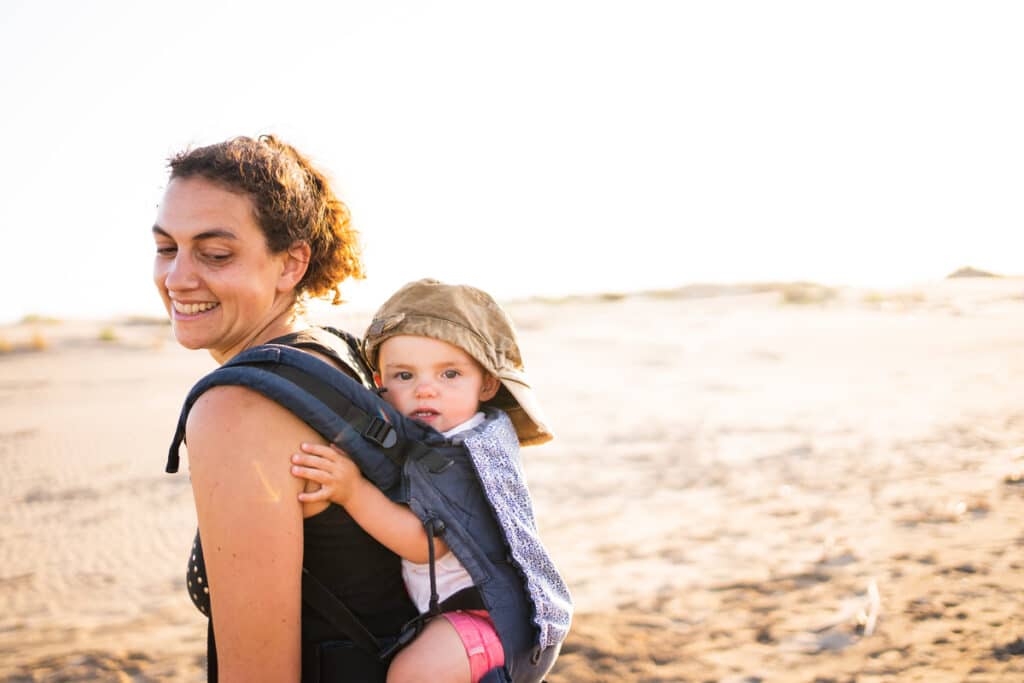
QUES 3: How To Properly Clean And Maintain A Baby Carrier?
ANS: It’s important to regularly clean and maintain your baby carrier to ensure it stays hygienic and in good condition. There are a few different methods for cleaning:
- For carriers made of fabric, check the manufacturer’s instructions for specific cleaning recommendations. In general, most can be hand-washed or machine-washed on a gentle cycle with mild detergent.
- For carriers made of more durable materials like canvas or leather, spot clean with a mild soap and water solution.
- It’s also important to regularly check your carrier for any wear and tear, such as loose stitching or frayed straps, and address them promptly to ensure your baby’s safety.
QUES 3: What Are Some Tips For Breastfeeding While Babywearing?
ANS: Breastfeeding while babywearing can be a convenient and comfortable option for many mothers. Here are some tips to make it easier:
- Choose a carrier that allows for easy access to your breast, either through a front or side opening.
- Ensure that your baby’s head is supported and not obstructing their airway while nursing.
- Practice in a safe environment before attempting to breastfeed while walking or moving.
- If using a wrap-style carrier, make sure the fabric is not too tight around your baby’s face when nursing.
QUES 4: Can You Carry Twins In A Baby Carrier?
ANS: Yes, there are many carriers designed specifically for carrying twins. However, it’s important to choose a carrier that is suitable for your babies’ age and weight and also comfortable for you to wear. Some carriers allow for tandem carrying (carrying both babies at the same time), while others may require two separate carriers. It’s best to do some research and try out different options before settling on a carrier for twins.
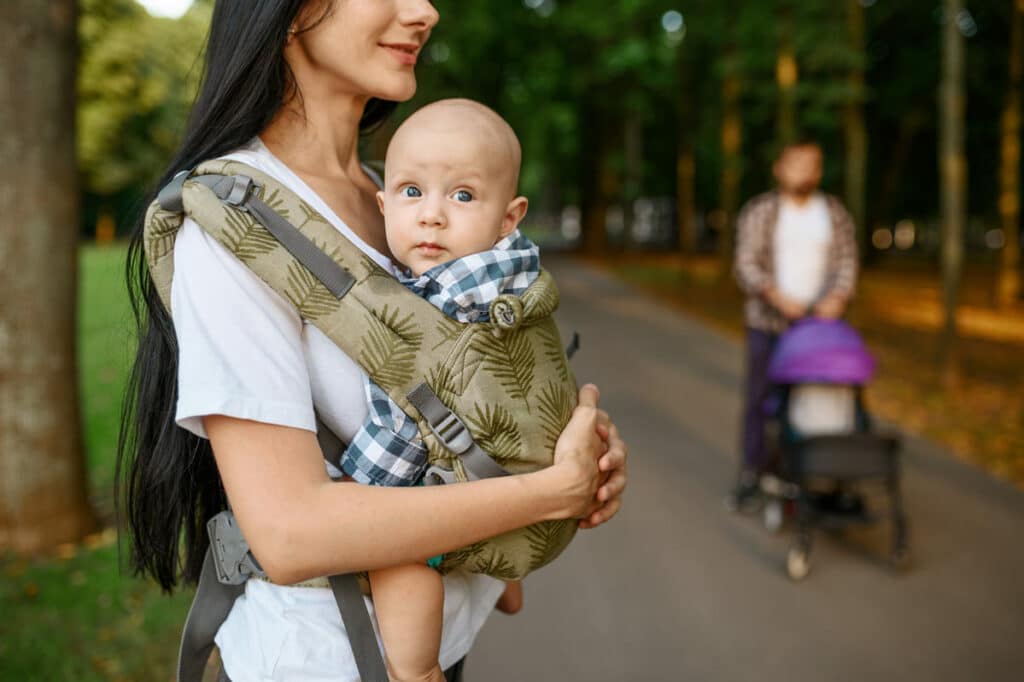
QUES 5: How To Ensure Proper Hip Positioning In A Baby Carrier?
ANS: When using a baby carrier, it is important to ensure proper hip positioning for your little one. The ideal for your baby’s hips, their legs should straddle your body, with support across their entire seated width. Their knees should be slightly higher than their bottom, forming an “M” shape. Experts recommend inward-facing carrying for the first six months to promote optimum hip development.
QUES 6: Can Babywearing Help With Postpartum Depression?
ANS: Yes, babywearing has been shown to have positive effects on postpartum depression in new mothers. The physical closeness and bonding with the baby can help reduce feelings of stress and anxiety, as well as promote the release of oxytocin (the “love hormone”) which can improve mood and decrease symptoms of depression. Furthermore, babywearing can also help new mothers feel more confident and capable in their parenting role.
QUES 7: What Are Some Common Mistakes To Avoid When Using A Baby Carrier?
ANS: It’s important to always follow the manufacturer’s instructions when using a baby carrier and to regularly check for any signs of wear or damage. Some common mistakes to avoid include:
- Using an incorrect size or type of carrier for your baby.
- Not properly securing all buckles, straps, and ties.
- Facing your baby outward in a front-facing carrier before they are developmentally ready.
- Carrying your baby too low or with their legs dangling straight down can put a strain on their hips and spine.
- Not regularly checking for proper airflow and ensuring your baby’s airway is clear.
QUES 8: Can we use a baby carrier for a newborn?
ANS: You can use a baby carrier for a newborn, but it’s important to choose one designed specifically for their small size and neck support needs. It’s generally recommended to wait until the baby is at least 8 pounds before using a carrier. However, you should always check with your pediatrician if you have any concerns about using a carrier with your newborn.
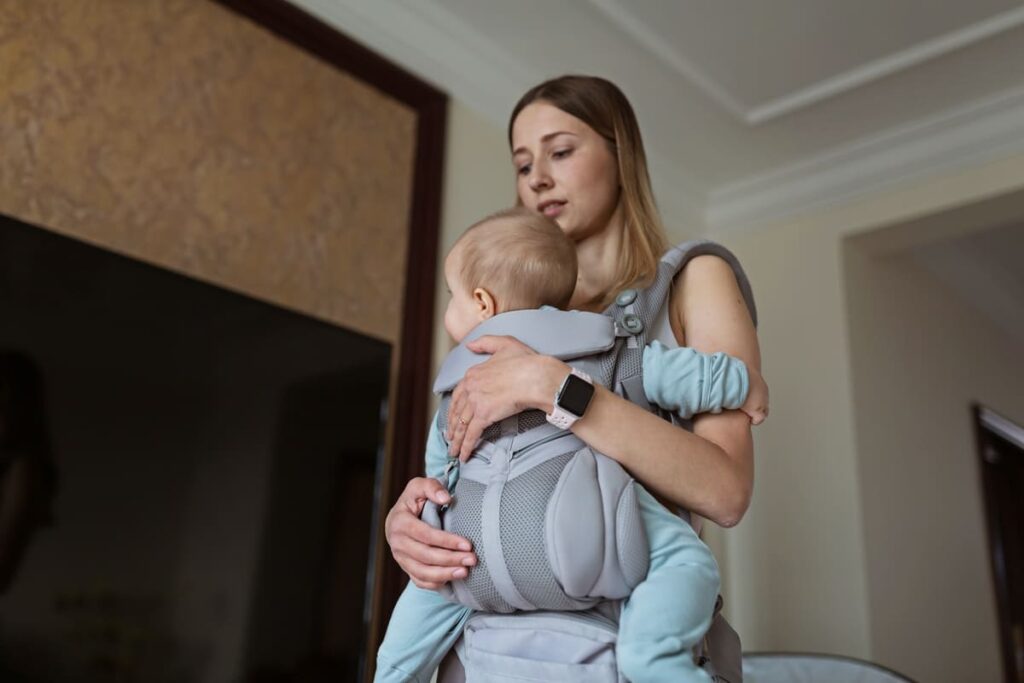
QUES 9: How to protect a baby from the rain in a carrier?
ANS: If you have to go out in the rain with your baby in a carrier, here are some tips to keep them dry and comfortable:
- Use an umbrella or rain cover specifically designed for baby carriers.
- Make sure the carrier is properly adjusted and that the fabric is not too tight against your baby’s face, allowing for proper airflow.
- Consider using a waterproof carrier or wrapping a rain jacket or poncho around you and your baby.
- If your carrier gets wet, make sure to dry it thoroughly before using it again.
QUES 10: How to wrap a baby carrier?
ANS: The process of wrapping a baby carrier can vary depending on the type of carrier you have. For instructions specific to your carrier, it’s best to consult the manufacturer’s guidelines or instructional videos. In general, here are some steps to follow when wrapping a baby carrier:
- Start by finding the center point of your wrap and place it in the middle of your chest.
- Cross the two ends behind your back and bring them around to the front.
- Hold one end in each hand while making sure the fabric stays flat and smooth.
- Bring the fabric up and over your shoulders, creating an “X” on your back.
- Make sure the fabric is spread out across your back and there are no twists or bunching.
- Bring the fabric down and under your baby’s bottom, creating a seat for them to sit on.
- Secure the fabric around your waist by tying or wrapping it around your body.
- Adjust the fabric as needed to ensure proper support for both you and your baby.
- Make sure all buckles and straps are properly secured before wearing the carrier.
- Finally, always double-check to make sure your baby’s airway is clear and they are in a comfortable position before going on any walks with the carrier.
QUES 11: When to carry a baby in carrier?
ANS: Experts recommend babies should be at least 4–5 months old and weigh over 12 lbs before using a carrier. However, you can start using a carrier for newborns as long as it provides proper head and neck support. It’s always best to follow the manufacturer’s recommendations and consult with your pediatrician if you have any concerns about carrying your baby in a carrier. As babies grow and gain head control, they may be able to be carried for longer periods of time in a carrier.
QUES 12: How to use a baby carrier belt?
ANS: A baby carrier belt is designed to provide support and distribute the weight of your baby more evenly while using a carrier. Here are some basic steps for using a baby carrier belt:
- Make sure the carrier is the right size for your child.
- Tighten the straps according to your size.
- Loosen the belt and put it on like a regular belt, with the buckle at your front.
- Securely buckle the carrier around your waist.
- Place your baby in the carrier, making sure their legs are properly positioned and supported.
- Adjust any straps or buckles as needed for comfort and proper support.
- Always check your baby’s airway, and make sure they are comfortable before going on walks or activities with the carrier.
QUES 13: When can I start carrying my baby in a carrier?
ANS: You can carry your baby in a carrier as soon as they are born, but it’s important to choose one that is suitable for their size and provides proper head and neck support. It’s generally recommended to wait until the baby is at least 4-6 months old and has good head control before using a front-facing carrier. However, you should always consult with your pediatrician if you have any concerns about carrying your baby in a carrier.
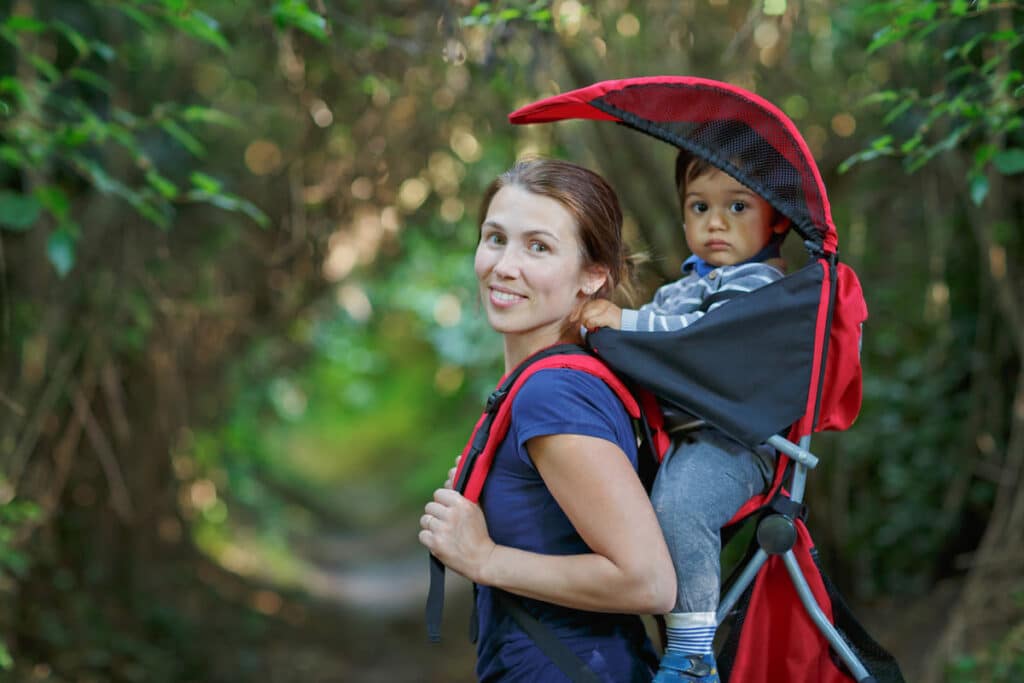
QUES 14: What Features Should Be Considered When Buying A Baby Carrier?
ANS: When choosing a baby carrier, here are some important features to consider:
- Proper sizing and weight limits for your child’s age and size.
- Adequate head, neck, and spine support for your baby.
- Comfortable straps and buckles for the wearer.
- Breathable fabric to prevent overheating.
- Easy to clean material that is durable and long-lasting.
- Multiple carrying positions to accommodate your and your baby’s preferences.
- Adequate padding for both you and your baby’s comfort.
- Safety certifications and reviews from other parents.
- The option to try on and test out carriers before purchasing.
QUES 15: How to adjust the baby carrier?
ANS: The process of adjusting a baby carrier can vary depending on the type and brand of carrier you have. However, here are some steps to follow when adjusting a baby carrier:
- Start by finding the straps or buckles that need to be adjusted.
- Loosen or tighten them according to your comfort and the weight of your baby.
- Make sure all straps are secure and properly aligned to evenly distribute weight.
- Double-check for any twists or bunching in the fabric.
- Adjust the carrier as needed while wearing it, making sure both you and your baby are comfortable.
- Re-adjust if necessary throughout use to maintain proper support for you and your baby.
- Always consult the manufacturer’s guidelines if you have any questions or concerns about adjusting your baby carrier.
QUES 16: How to make a baby carrier out of a backpack?
ANS: When selecting a backpack for a baby carrier, prioritize sturdy material and a padded aluminum frame. Here’s how to make a baby carrier out of a backpack:
- Begin by removing any unnecessary straps or attachments from the backpack.
- Sew the fuzzy side horizontally above the top compartment on the outside of the carrier.
- Securely sew the edges of the strip to the sack’s material after removing the pack from its frame.
- If the backpack lacks a bottom seam, open it and sew the mesh pocket onto the middle section.
- Roll the bottom edge twice to prevent fraying.
- Attach the velcro straps to the side of the carrier.
- Sew a velcro headband at the top.
- Leave gaps for turning the carrier inside out.
- Turn the carrier inside out.
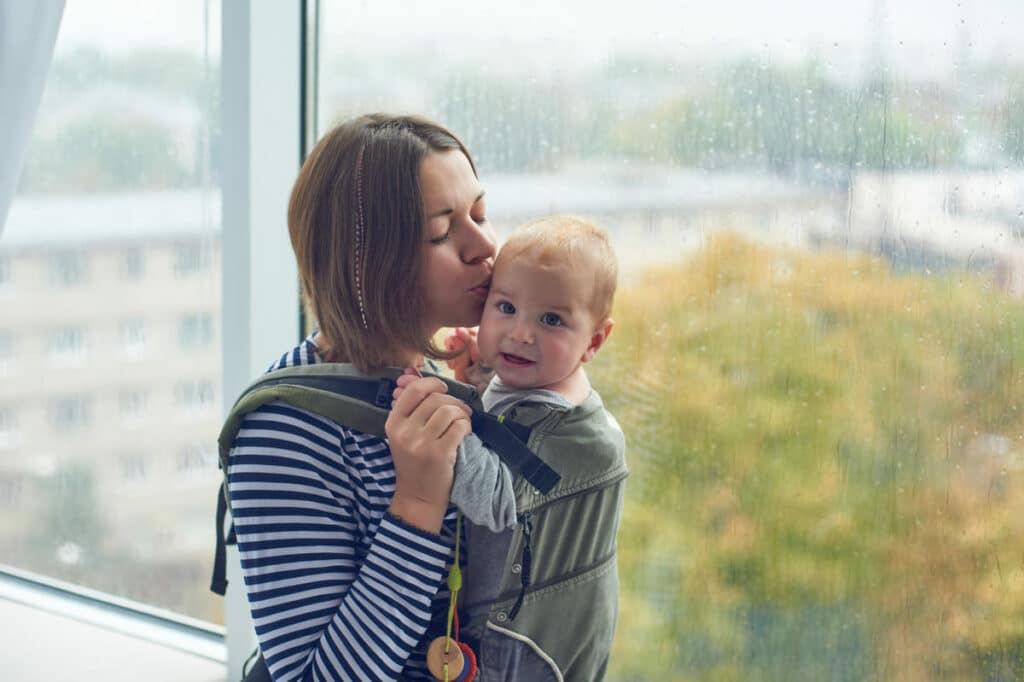
QUES 17: How to wear a seat belt with a baby carrier?
ANS: It’s important to always follow the manufacturer’s recommendations when wearing a seat belt with a baby carrier. Here are some general tips to keep in mind:
- Place the baby carrier on your body according to the manufacturer’s instructions.
- Adjust the straps of the carrier securely.
- Position the seat belt over the carrier and fasten it properly.
- Ensure that the seat belt is snug and secure, without any slack.
- Double-check that the seat belt is not obstructing the baby’s face or airway.
- Regularly check the seat belt and carrier for any signs of looseness or discomfort during the journey.
QUES 18: Is a baby carrier with a hip seat good?
ANS: A baby carrier with a hip seat can be a good option for parents who want to carry their child while still providing support and comfort for themselves. The hip seat helps distribute the weight of the baby more evenly, reducing strain on the wearer’s back and shoulders. However, it’s important to make sure that the carrier has proper head and neck support for your baby, as well as adjustable straps and buckles for your own comfort.
QUES 19: What Is The Optimal Age To Start And Stop Using A Baby Carrier?
ANS: The optimal age to start using a baby carrier is when your baby has good head and neck control, usually around 4-6 months old. However, you can also use a carrier as soon as your baby is born as long as the carrier provides proper support for their size. As for stopping, it ultimately depends on the weight limit of the carrier and how comfortable both you and your baby are while using it. Some carriers can accommodate children up to 2-3 years old, but it’s important to always consult with the manufacturer’s guidelines.
QUES 20: How To Transition A Baby From Carrier To Crib?
ANS: Transitioning a baby from a carrier to a crib can be challenging, but here are some tips to help make the process smoother:
- Start by establishing a consistent nap routine in the crib.
- Gradually transition from using the carrier for naps to placing the baby directly in the crib.
- Consider using a pushchair for naps as an intermediate step.
- Make sure the crib environment is soothing and familiar to the baby.
- Try sleeping on the crib sheets to transfer your scent to them.
- Take your time and be patient during the transition process.
- Move the baby slowly and gently when transferring them from the carrier to the crib.
- Practice consistently for a few weeks to help the baby adjust to the new sleep arrangement.
QUES 21: Are Certain Fabrics Better For Baby Carriers?
ANS: When it comes to choosing fabrics for baby carriers, certain options are generally considered better than others. Breathable fabrics such as cotton, bamboo, and linen are ideal for keeping both the baby and the wearer cool and comfortable. Avoid synthetic materials as they can trap heat and cause discomfort, especially in warmer weather. It’s also important to choose a fabric that is durable and easy to clean as it will likely be used frequently.

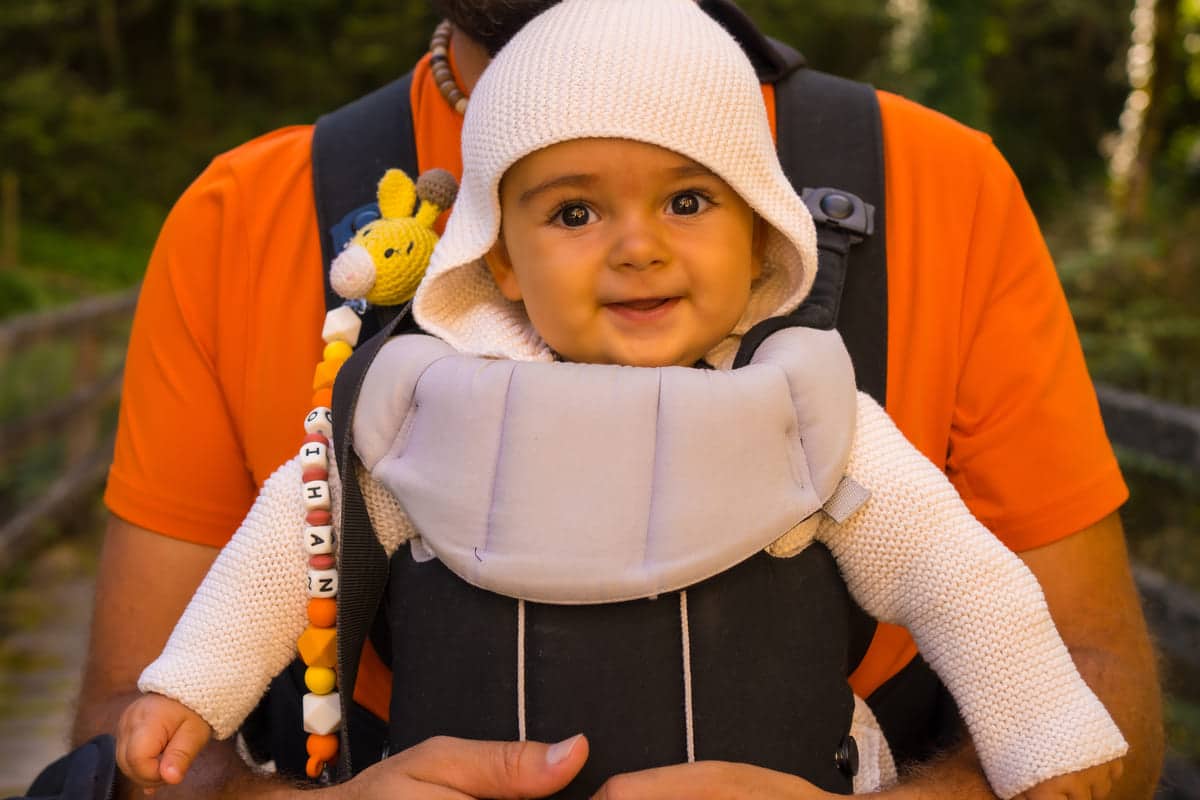
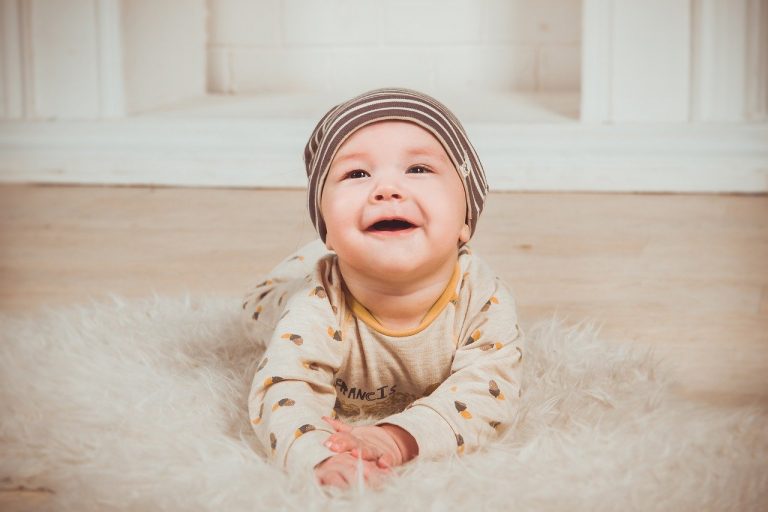
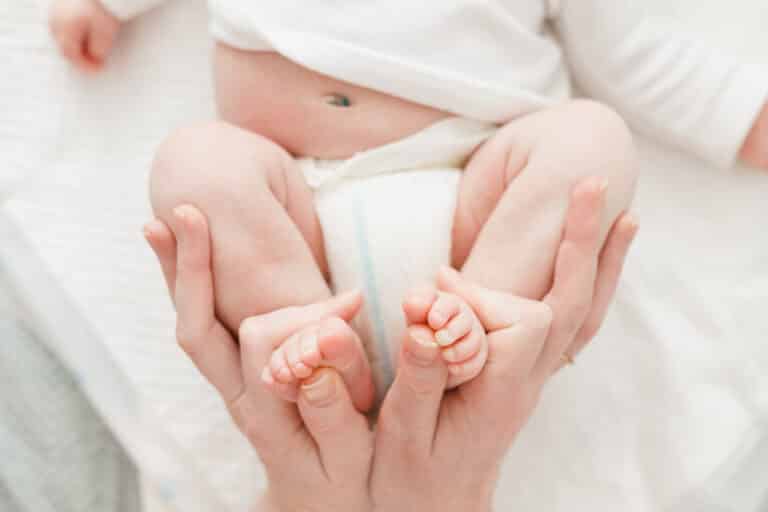
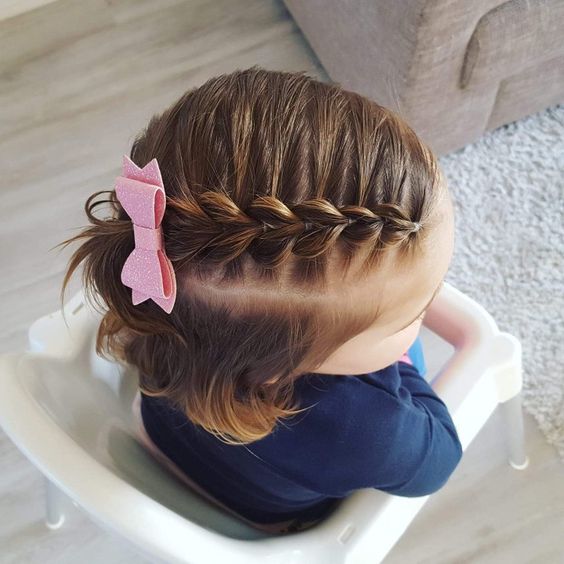





![Home Renovation Guide [2025]](/app/uploads/2021/04/design-hacks-1-378x300.jpg)
